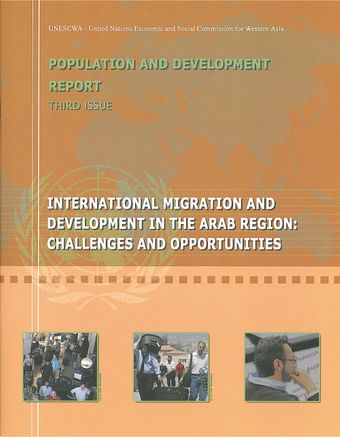Conclusions and trends in the development of migration policies in the Arab region

- Author: United Nations
- Main Title: Population and Development Report , pp 40-48
- Publication Date: December 2007
- DOI: https://doi.org/10.18356/6948bf35-en
- Language: English
Over the 30 years between the 1960s and 1990s, there was a clear division in the Arab region between labour sending and labour receiving countries. Oil played a major role in that division. Oil-producing countries and, in particular, the GCC States, have enormous oil wealth but insufficient manpower; whereas non-oil countries suffer from a deficit of capital and have an increasing surplus of labour. Given the demand of oil-producing countries for labour, the Arab region has become the third highest labour-receiving region in the world after North America and Europe.
© United Nations
ISBN (PDF):
9789210557887
Book DOI:
https://doi.org/10.18356/430c9963-en
Related Subject(s):
Population and Demography
Sustainable Development Goals:
-
From This Site
/content/books/9789210557887c006dcterms_title,dcterms_subject,pub_keyword-contentType:Journal -contentType:Contributor -contentType:Concept -contentType:Institution105
/content/books/9789210557887c006
dcterms_title,dcterms_subject,pub_keyword
-contentType:Journal -contentType:Contributor -contentType:Concept -contentType:Institution
10
5


